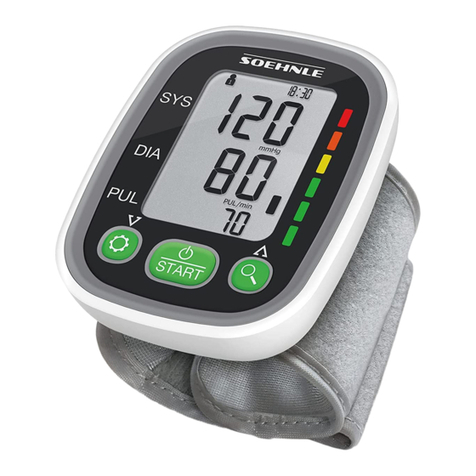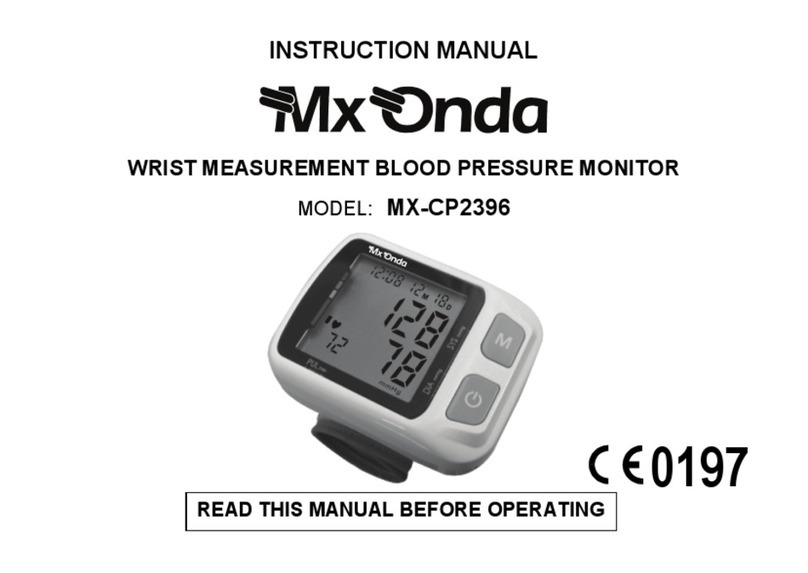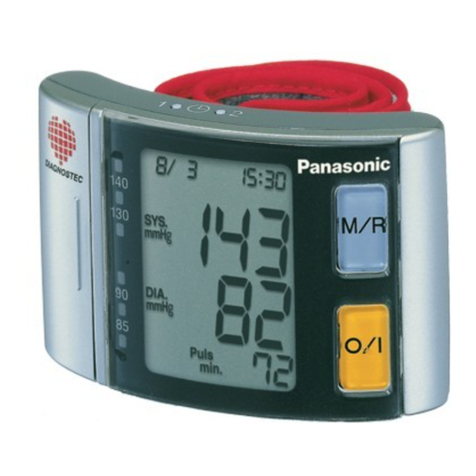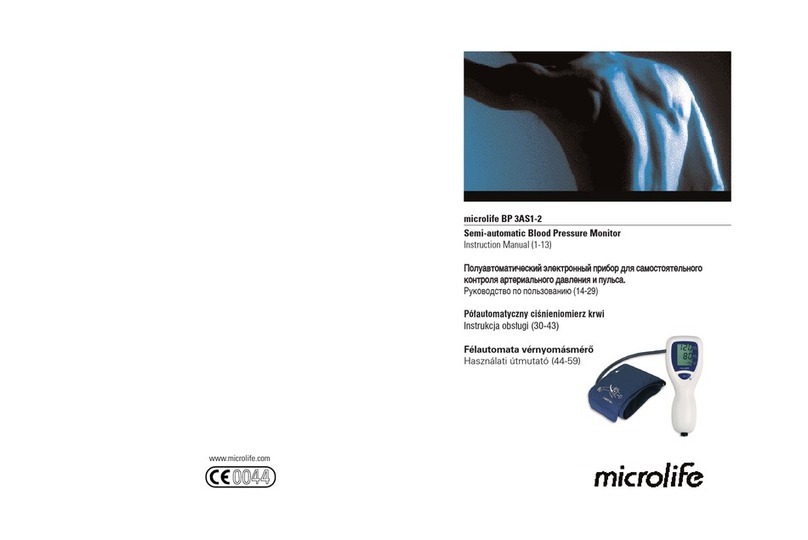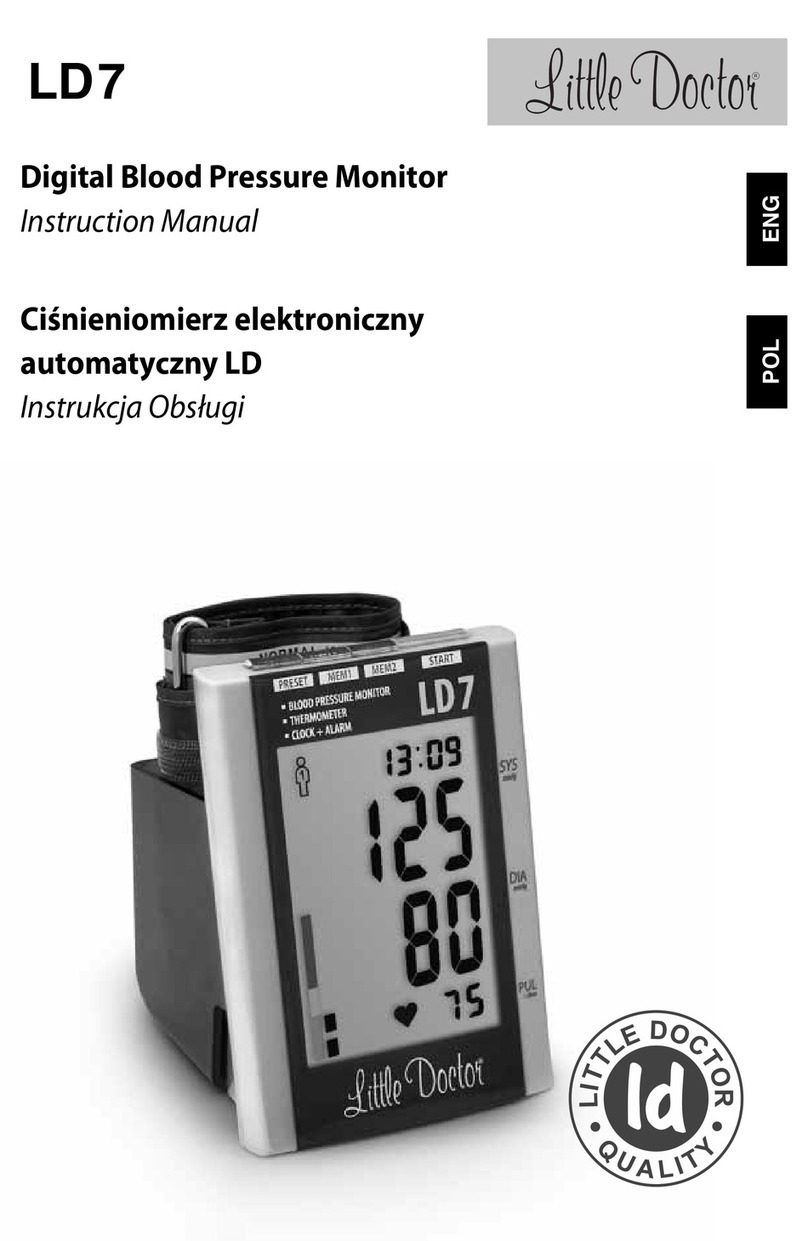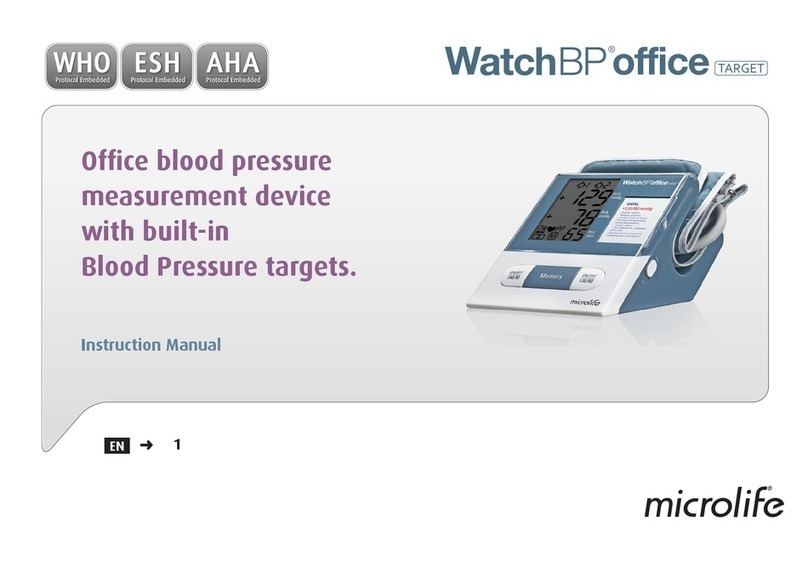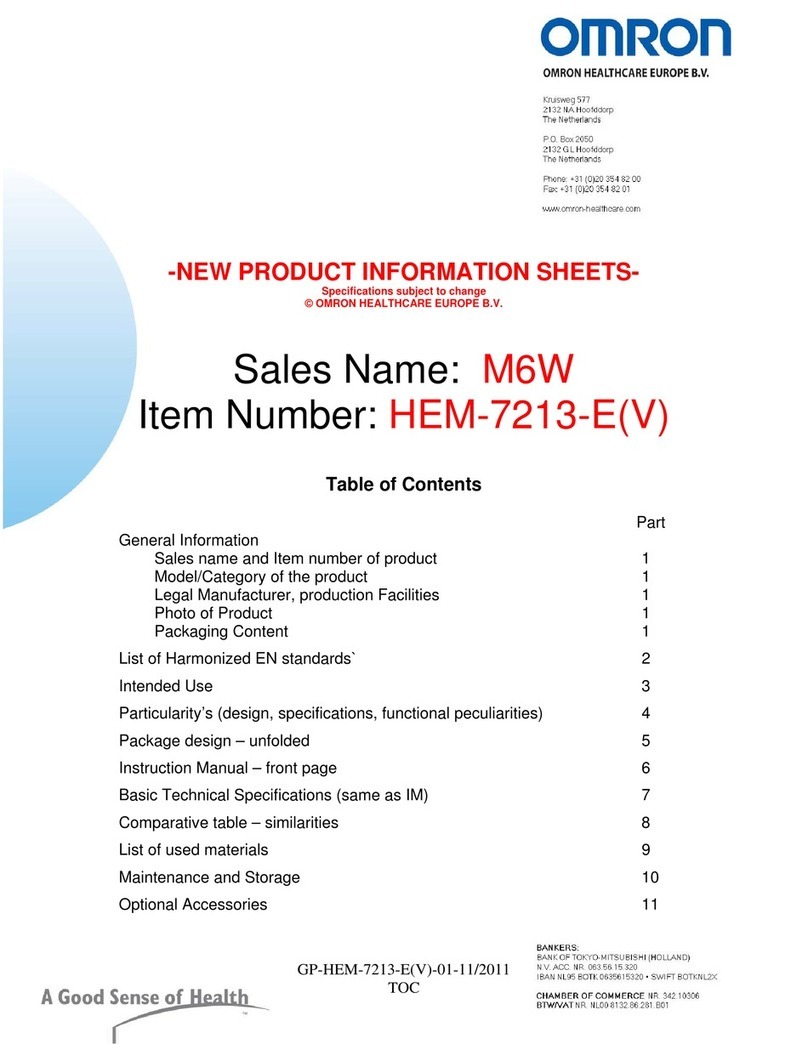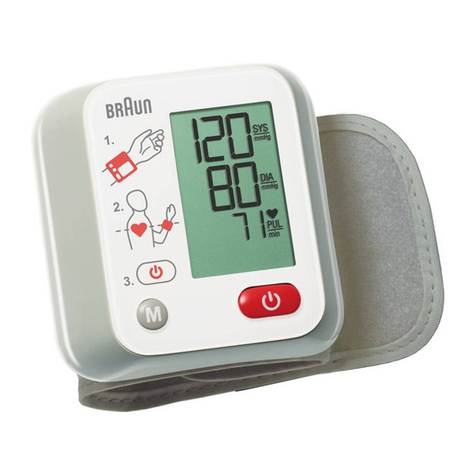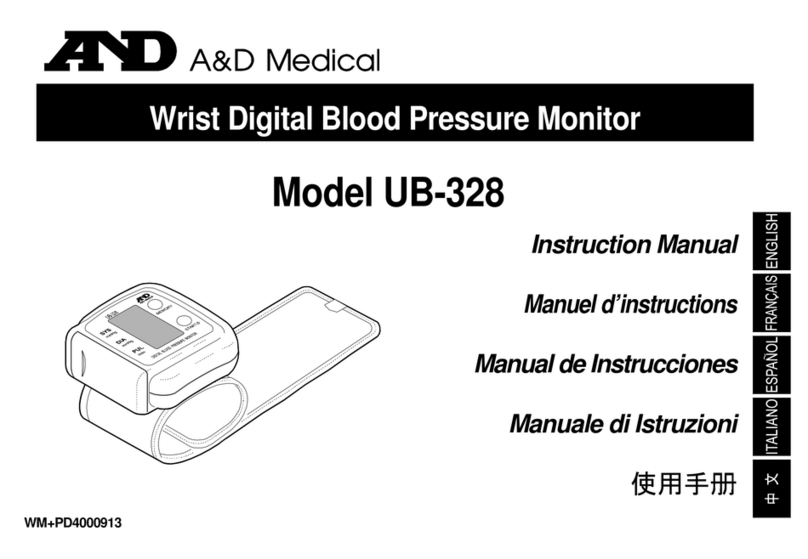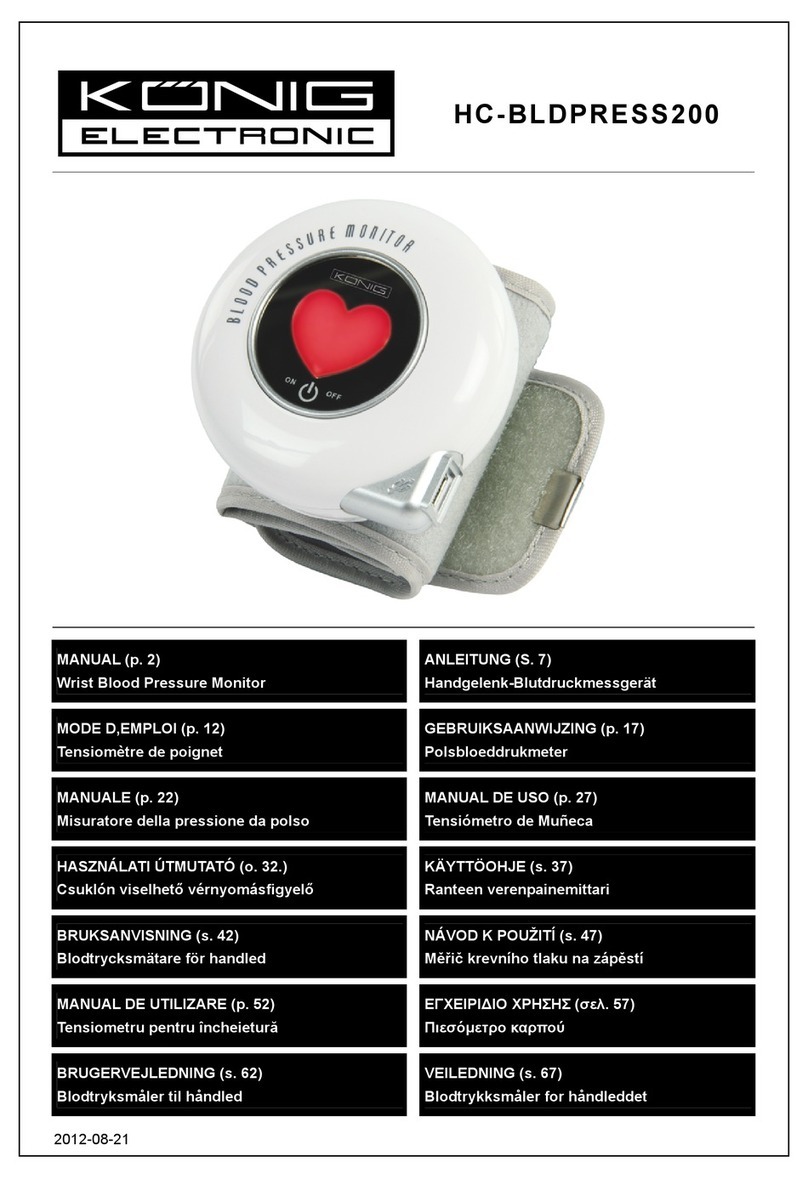10
•Keep in mind that during daily blood pressure measurements, daily values depend on
many factors. Thus, consumption of tobacco, alcohol, drugs or body effort, influence the
values taken to a large extent. Stay relaxed and in a quiet environment at least 30
minutes before taking measurements.
•The blood pressure values should be interpreted by a physician or A.T.S. Who is
familiar with the patient's history. By regularly measuring blood pressure the physician
or A.T.S can carry out a more thorough follow-up of the patient.
•In exceptional cases it may happen that an irregular or very weak pulse does not allow
to carry out the measurements. If so, talk to your doctor or A.T.S.
•Using this apparatus correctly, the measured blood pressure corresponds to that
obtained by the stethoscope auscultation method.
•The blood pressure of the left arm relative to the right arm or viceversa, can vary
approximately 40 mmHg so it is recommended to always carry out the measurements in
the same arm.
•The cuff size is designed for adult use only.
•Do not use this appliance with people who have arrhythmias.
•Avoid measurements near appliances that generate strong magnetic fields, or
electrostatic interference such as mobile phones, microwave ovens, etc.
•If you do not intend to use the appliance for a long period of time, remove the batteries
and store them in a cool place.

